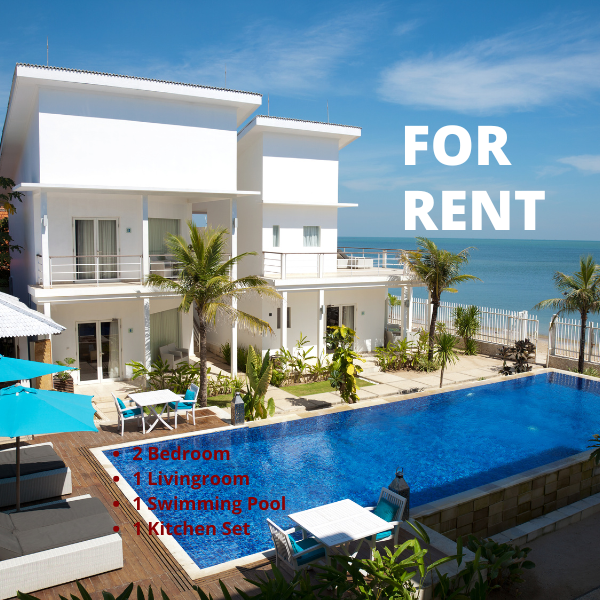Investing in a rundown property – profitable rental can be a daunting yet rewarding endeavor. With the right approach, a dilapidated property can be transformed into a lucrative rental, providing a steady stream of income and significant returns on investment. This guide explores the step-by-step process taken by an investor, Sarah Mitchell, to turn a neglected property into a profitable rental. By examining her journey, we can uncover the strategies, challenges, and key factors that contributed to her success.
1. Identifying the Right Property for Profitable Rental
Market Research
Before purchasing a property, Sarah conducted extensive market research to identify promising locations and properties. She focused on the following aspects:
- Neighborhood Analysis: Assessing the potential for growth and rental demand in various neighborhoods. Sarah looked for areas with improving infrastructure, proximity to amenities, and a growing population.
- Comparative Market Analysis: Evaluating similar properties in the target neighborhoods to understand market trends, rental rates, and property values.
- Investment Goals: Aligning the property search with her investment goals, which included long-term rental income, property appreciation, and the potential for future development.
Property Search
Sarah utilized multiple resources to find potential properties, including online listings, real estate agents, and local auctions. She shortlisted several properties that met her criteria and conducted on-site visits to assess their condition and potential.
2. Acquiring the Property
Financial Planning
Acquiring a rundown property requires careful financial planning. Sarah considered the following factors:
- Budgeting: Estimating the total investment required, including the purchase price, renovation costs, and contingency funds.
- Financing Options: Exploring different financing options such as mortgages, personal loans, or partnerships. Sarah secured a renovation loan, which provided funds for both the purchase and renovation of the property.
- Cost-Benefit Analysis: Conduct a cost-benefit analysis to ensure the projected rental income and property appreciation justified the investment.
Property Inspection and Due Diligence
Before finalizing the purchase, Sarah conducted thorough inspections and due diligence:
- Property Inspection: Hiring a professional inspector to evaluate the property\’s structural integrity, electrical and plumbing systems, roofing, and other critical components.
- Title Search: Ensuring clear property title and identifying any legal or financial encumbrances.
- Negotiation: Negotiating the purchase price based on the inspection findings and estimated renovation costs.
3. Planning the Renovation
Setting Objectives
Sarah\’s renovation objectives were clear:
- Structural Integrity: Ensuring the property was safe and sound by addressing any structural issues.
- Modern Amenities: Upgrading the property with modern amenities to attract high-quality tenants.
- Aesthetic Appeal: Enhancing the property\’s aesthetic appeal to increase its market value and rental potential.
- Budget and Timeline: Completing the renovation within budget and on schedule to minimize holding costs and start generating rental income as soon as possible.
Hiring Professionals
Sarah hired a team of professionals to assist with the renovation:
- Architect: Designing a renovation plan that maximized the property\’s potential and complied with local building codes.
- Contractor: Managing the renovation project, coordinating with subcontractors, and ensuring quality workmanship.
- Interior Designer: Advising on interior finishes and décor to create an appealing living space.
4. Executing the Renovation
Demolition and Cleanup
The first phase of the renovation involved demolishing unsafe or outdated structures and cleaning up the property:
- Permits: Obtaining necessary permits for demolition and construction work.
- Safety Measures: Ensuring safety measures were in place to protect workers and neighboring properties.
- Waste Disposal: Arranging for the proper disposal of demolition debris and hazardous materials.
Structural Repairs
Addressing structural issues was crucial to ensure the property\’s safety and longevity:
- Foundation Repair: Reinforcing the foundation to prevent future settling or structural damage.
- Roofing: Replacing or repairing the roof to prevent leaks and improve insulation.
- Framing and Support: Repairing or replacing damaged framing and support beams to ensure structural integrity.
Upgrading Systems
Modernizing the property\’s systems was essential for tenant comfort and compliance with building codes:
- Electrical System: Rewiring the property, installing new electrical panels, and ensuring sufficient outlets and lighting.
- Plumbing: Replacing old plumbing with new pipes, fixtures, and water heaters to ensure reliable water supply and drainage.
- HVAC: Installing an efficient heating, ventilation, and air conditioning (HVAC) system for year-round comfort.
Interior and Exterior Renovations
Enhancing the property\’s interior and exterior appeal was key to attracting tenants:
- Interior Renovations:
- Walls and Ceilings: Repairing and painting walls and ceilings to create a fresh, clean look.
- Flooring: Installing durable, attractive flooring such as hardwood, laminate, or tile.
- Kitchens and Bathrooms: Modernizing kitchens and bathrooms with new cabinets, countertops, appliances, and fixtures.
- Lighting: Adding modern, energy-efficient lighting fixtures to improve ambiance and functionality.
- Storage: Maximizing storage space with built-in closets and shelving.
- Exterior Renovations:
- Siding and Painting: Repairing or replacing siding and painting the exterior to enhance curb appeal.
- Windows and Doors: Installing new, energy-efficient windows and doors for improved insulation and security.
- Landscaping: Creating an inviting outdoor space with landscaping, pathways, and outdoor lighting.
4. Preparing for Tenants
Marketing the Property
Effective marketing was crucial to attract high-quality tenants:
- Professional Photography: Hiring a professional photographer to capture high-quality images of the renovated property.
- Online Listings: Listing the property on popular rental websites and social media platforms to reach a wide audience.
- Open Houses: Hosting open houses to showcase the property to potential tenants and real estate agents.
- Targeted Advertising: Utilizing targeted advertising to reach specific demographics, such as young professionals, families, or students.
Screening Tenants
Screening tenants thoroughly was essential to ensure reliable rental income and property care:
- Application Process: Implementing a detailed application process that included credit checks, employment verification, and references.
- Background Checks: Conducting background checks to identify any potential issues with applicants\’ rental history or criminal records.
- Interviewing: Interviewing potential tenants to assess their suitability and commitment to maintaining the property.
Setting Rental Rates
Setting competitive rental rates was key to attracting tenants while ensuring profitability:
- Market Analysis: Analyzing rental rates for similar properties in the area to determine competitive pricing.
- Value-Added Features: Highlighting value-added features such as modern amenities, energy-efficient systems, and premium finishes to justify higher rental rates.
- Flexible Lease Terms: Offering flexible lease terms, such as short-term or long-term leases, to accommodate different tenant needs.
5. Managing the Property
Property Management Options
Sarah considered different property management options to ensure efficient and effective property management:
- Self-Management: Managing the property herself to save on management fees, while taking on the responsibilities of tenant relations, maintenance, and rent collection.
- Professional Property Management: Hiring a professional property management company to handle day-to-day operations, tenant issues, and maintenance tasks.
Tenant Relations
Maintaining positive tenant relations was crucial for long-term rental success:
- Responsive Communication: Ensuring prompt and responsive communication with tenants to address any concerns or issues.
- Regular Inspections: Conducting regular property inspections to identify and address maintenance needs and ensure the property remained in good condition.
- Tenant Satisfaction: Implementing measures to enhance tenant satisfaction, such as timely maintenance, community events, and tenant feedback surveys.
Maintenance and Repairs
Effective maintenance and repair practices were essential to preserve the property\’s value and appeal:
- Preventive Maintenance: Implementing a preventive maintenance schedule to address potential issues before they became major problems.
- Emergency Repairs: Establishing a system for handling emergency repairs promptly and efficiently.
- Vendor Relationships: Building relationships with reliable contractors and service providers to ensure quality work at competitive prices.
6. Financial Management and Performance Monitoring
Financial Planning
Sarah focused on sound financial planning to ensure a profitable rental:
- Budgeting and Forecasting: Creating detailed budgets and financial forecasts to manage expenses and anticipate future financial needs.
- Cash Flow Management: Monitoring cash flow closely to ensure sufficient funds for operating expenses, maintenance, and future investments.
- Tax Planning: Implementing tax planning strategies to minimize tax liabilities and maximize tax benefits.
Performance Monitoring
Regular performance monitoring helped Sarah track the property\’s financial performance and identify areas for improvement:
- Rent Collection: Monitoring rent collection to ensure timely payments and address any issues with delinquent tenants.
- Expense Tracking: Tracking expenses meticulously to manage costs and identify potential savings.
- Profitability Analysis: Conducting periodic profitability analyses to assess the property\’s financial performance and make informed decisions.
Conclusion
Transforming a rundown property into a profitable rental requires careful planning, strategic decision-making, and diligent execution. Sarah Mitchell\’s journey highlights the importance of market research, thorough property inspections, detailed financial planning, and effective renovation strategies. By engaging with professionals, leveraging modern amenities, and prioritizing tenant satisfaction, Sarah successfully turned a dilapidated property into a lucrative rental.
The key takeaways for investors considering similar projects are:
- Identify Promising Locations: Focus on areas with growth potential, improving infrastructure, and strong rental demand.
- Conduct Thorough Inspections: Ensure comprehensive property inspections and due diligence to identify potential issues and negotiate favorable terms.
- Plan Detailed Renovations: Develop a clear renovation plan that addresses structural issues, modernizes systems, and enhances aesthetic appeal.
- Engage with Professionals: Hire experienced professionals, including architects, contractors, and property managers, to ensure quality work and effective management.
- Market Effectively: Utilize professional photography, online listings, and targeted advertising to attract high-quality tenants.
- Screen Tenants Carefully: Implement a rigorous tenant screening process to ensure reliable rental income and property care.
- Manage Finances Diligently: Monitor cash flow, track expenses, and conduct profitability analyses to ensure long-term financial success.
By following these steps and learning from Sarah\’s experience, investors can navigate the challenges of transforming rundown properties into profitable rentals, ultimately achieving their investment goals and maximizing returns.
Learn More
For more information on how to turn Rundown Property into a Profitable Rental, real estate investment strategies, and more, visit the Ngrealtyhub blog section.
Engage with Us
Share your thoughts and experiences in the comments below!

